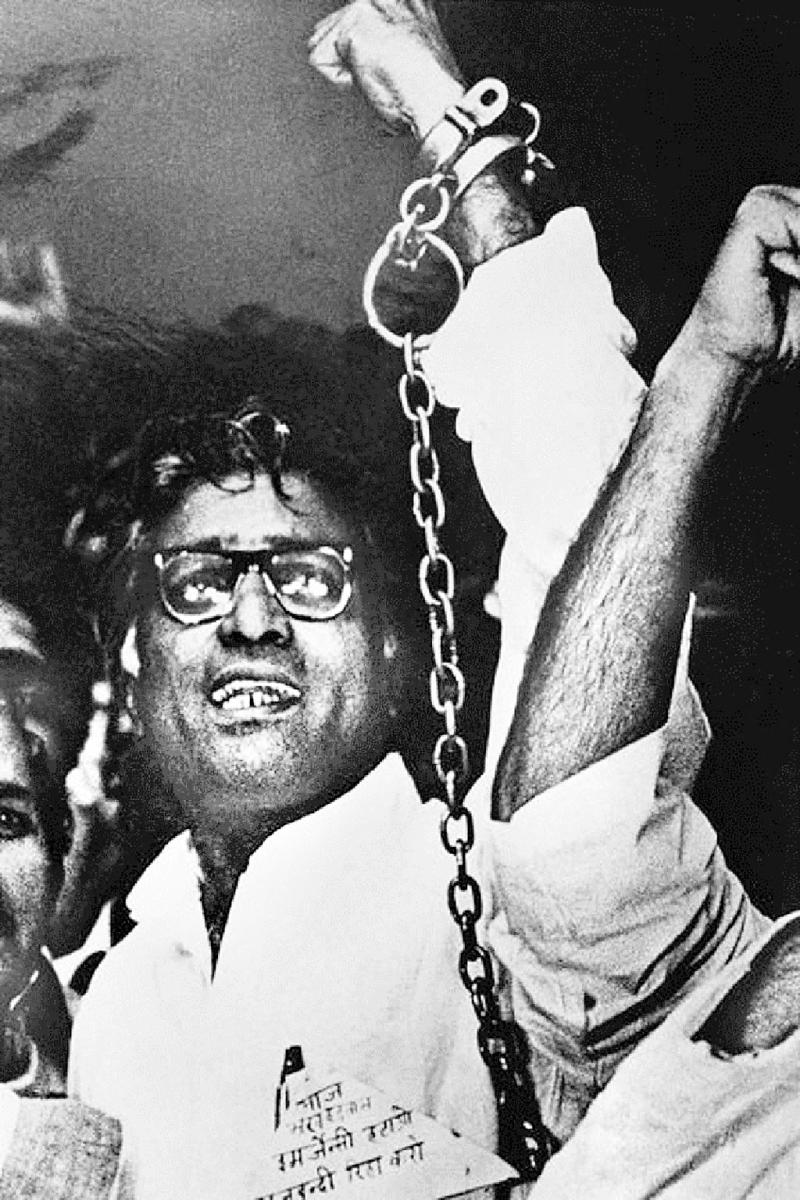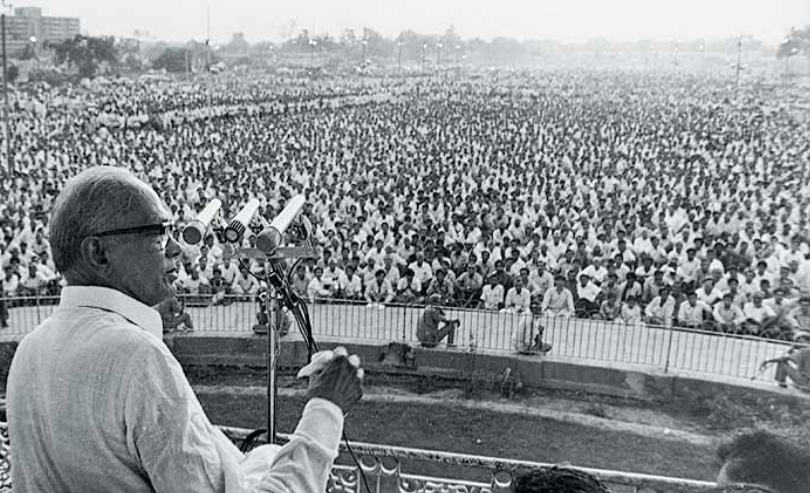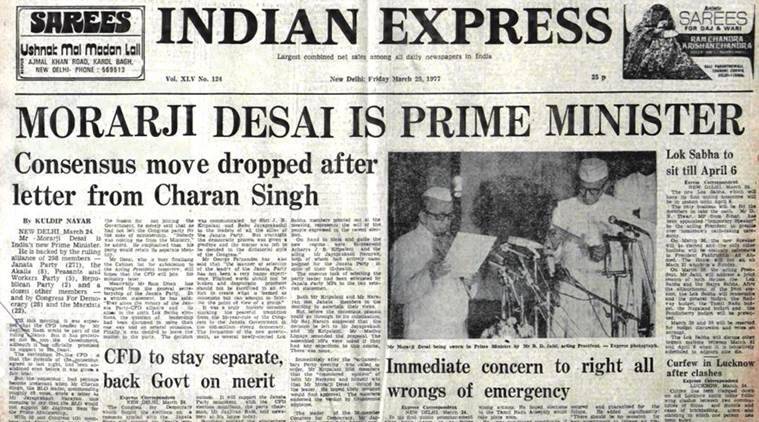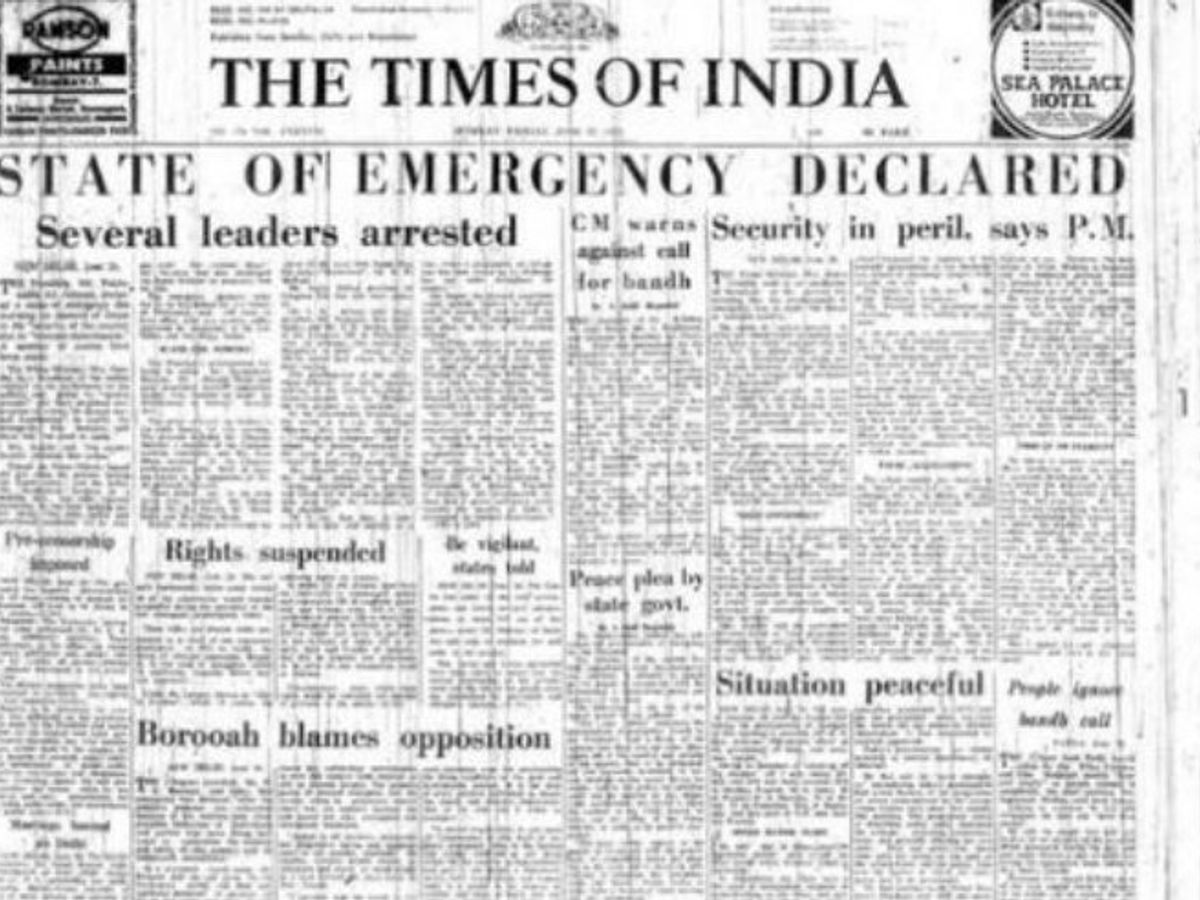The Indian Emergency of 25th June 1975-21st March 1977 was a 21 month period, when President Fakhruddin Ali Ahmed, upon advice by Prime Minister Indira Gandhi, declared a state of emergency under Article 352 of the Constitution of India, effectively bestowing on her the power to rule by decree, suspending elections and civil liberties.
This was a dramatic turn in the Indian political affairs. The democracy was brought to a grinding halt and all the fundamental rights and legal remedies protected by the Constitution of The Republic of India were suspended. Indira Gandhi tried to defend the emergency because she was trying to protect the State and the Indian people. Nevertheless, her emergency rule faced immense criticism and is undoubtedly one of the most controversial periods of the political history of Independent India.
Background of Emergency
Indira Gandhi fought and won the Loksabha Election in 1966 and she became the first female Prime Minister of India. But that doesn’t seem to be the end of her desire for power as she wished an absolute control of not only the government but also of the Congress Party. This desire lead to the split of the Congress party into two factions: Congress (O) and the Congress (R), with the latter being led by Mrs. Gandhi. Later, Congress (R) becomes Congress (I) in which ‘I’ stands for Indira and later becomes Indian National Congress as Congress (O) merged with Janata Party.
How it happened

Control over judiciary: The first precursor to the Emergency, 1975 seems to be an attempt by Prime Minister Indira Gandhi to control the Judiciary system of the Country. In the judgments related to the Golaknath case (1967) and the Kesavananda Bharathi case (1973), the Supreme Court of India ruled that the Parliament of India could not amend the Constitution which affects basic issues such as the Fundamental Rights of Citizens. four did not agree with the verdict. Surprisingly, A.N Ray who was one of the dissenters to the verdict was made Chief Justice of India. There was an outcry related to the election of A.N Ray as the Chief Justice of India.

Political dissent: The Nav Nirman movement in Gujarat, had led to the imposition of President rule in the state after the dissolution of the state legislature. The re-elections were conducted in June 1977 and Congress was defeated by an alliance of opposition parties.

In Bihar Gandhian leader, Jayaprakash Narayan (JP) threw supported a student agitation against the state government, Bihar. In April 1974, he called for “total revolution”. This call led to the mass movement against the Bihar Government.

Election fraud: Indira Gandhi used the slogan “Garibi Hatao” in Lok Sabha Election. She won the election from Raebareli Constituency. Raj Narain was a socialist leader who fought against the Indira Gandhi from Raebareli Constituency smelled foul-play by Indira Gandhi. He alleged that Indira Gandhi used government machinery in the election, bribed the voters, and electoral malpractice. He filed a case against Indira Gandhi in Allahabad High court and the Allahabad High Court’s ruling was in the favor of Raj Narain case that came on June 12, 1975. The High Court found Indira Gandhi guilty of using the government machinery for her election campaigns.
The election for the constituency of Raebareli was declared null and void and Indira Gandhi was banned from holding the Prime Minister office for six years and banned from being part of any election. But acquittal on more serious charges of bribing lead to nationwide agitation led by JP Narayan, S.N. Sinha, and Morarji Desai. On 24th June 1975 Supreme court of India upheld the decision of the Allahabad High Court. Indira Gandhi’s privileges as Member of Parliament were stopped and she was banned from voting but she could continue as Prime Minister till the resolution pending to her appeal.

Jaiprakash Narayan launched an agitation asking government servants, police officers, etc. to reject the orders of the immoral and unethical central and state government. With massive strikes and political opposition facing her government, Indira Gandhi and her advisors asked the President Fakhruddin Ali Ahmed to declare a state of emergency due to “an imminent danger to the security of India being threatened by internal disturbances”. And so, just a few minutes before midnight on June 25, 1975, began one of the most controversial chapters in Indian history.
Timeline of Key Events during the Emergency
June 12, 1975: The Allahabad High Court found then-Prime Minister of India, Indira Gandhi guilty of electoral malpractice. She was disqualified and banned from holding the post of the prime minister for the next six years.
June 24, 1975: The Supreme Court of India granted a conditional stay on the high court’s directive.
June 25, 1975: The President of India, Fakhruddin Ali Ahmed, declared a state of emergency, a few minutes before midnight.
June 26, 1975: The Union Cabinet of India sanctioned the decision to impose the Emergency.
June 30, 1975: The MISA (Maintainance of Internal Security Act) was amended, through an ordinance, and the detention of any person who opposes the government without any trial was allowed.
July 1st, 1975, Economic and Social reforms: Civil Liberties were suspended and the government introduced a mandatory birth control program. During the emergency, Mrs. Gandhi’s 20-Point program promised to liquidate the existing debts of landless laborers, small farmers, and rural artisans. The program planned to extend alternate credit to them, abolish bonded labor and implement the existing agricultural land ceiling laws.
It provided house sites to landless laborers and weaker sections and it revised upwards minimum wages of agricultural labor. The program also provided special help to the handloom industry by bringing down the prices, preventing tax evasion and smuggling, increasing production, and streamlining the distribution of essential commodities. It increased the limit of income tax exemption up to Rs 8000 and liberalized investment procedures.
July 4th-5th, 1975, Twenty-six parties banned: The government of India banned four major religious, political, and revolutionary parties and 22 associated parties with them. These parties included the Anand Marg, Rashtriya Swayamasevak, the Naxalites, and the Jamaa-e-Islami-e-Hind.
July 23, 1975: The Rajya Sabha voted in the favour of the Emergency, and the next day, the Lok Sabha also passed it.August 3rd, 1975: An amendment to the Representation of the People Act was drafted to clear Indira Gandhi from the Allahabad high court ruling of June 12th, 1975.
August 4th, 1975: A least 50,000 or more people had been jailed in India since the declaration of Emergency.
August 15th, 1975: Bangladesh President Mujibar Rahaman was assassinated by Bangladeshi military leaders and this incident gave rise to new external problems in India.
September 15th, 1975: Delhi High Court ruled that charges must be entered when arrested under the Internal Security Act.
September 26th, 1975: Constitution (39th Amendment) Bill 1975 allowing the election of a Prime Minister beyond the scrutiny of the parliament was approved.
January 9th, 1976: The government suspends seven freedoms guaranteed by Article 19 of the Constitution of India.
February 4th, 1976: Lok Sabha’s life extended by one year.
November 2nd, 1976: Lok Sabha passes 42nd Constitution Amendment Bill making India a socialist, secular, republic, and laying down the fundamental duties of citizens.
January 18th-20th, 1977: The President dissolves Lok Sabha and a fresh Loksabha election was announced.
January 24, 1977: Under the leadership of Morarji Desai, Janata Party was launched by the Opposition. February 11, 1977: The then-president, Fakhruddin Ali Ahmed, died. March 16, 1977: The Janata Party, with allies, won 345 seats in the general election.
March 21st, 1977: Emergency withdrawal.
Post Emergency Period
The 21 month Emergency period was long and intensive, enough to leave permanent scars. The Janata Party was now the ruling party in India. The Janata government’s response to the natural calamities (seasonal floods and their associated devastation) and old Indian Problems proved no more effective than other methods had been in the past. Thus social and political discontents were very much present in post-emergency India.
It became harder for the government with an increase in smuggling, strikes, and social protests. Moreover, no satisfactory solution was produced that insured the Indian people and the democratic institutions that they will not be threatened by Emergency again. In response to this, the Shah commission was appointed by the new government on May 28th, 1977. The commission inquired into the allegations of abuse of authority and the malpractices during the emergency period. The commission found that Indira Gandhi had been motivated by considerations of exigency, as there was no concrete evidence that could warrant the declaration of emergency. She never consulted the cabinet with her decisions and the citizens were denied their basic freedom.
Charges against the Government during the Emergency Era
- Wanton detention of innocent people by police without charge or notification of families.
- Abuse and torture of detainees and political prisoners.
- Use of public and private media institutions, like the national television network Doordarshan, for propaganda.
- Forced vasectomy of thousands of men under the infamous family planning initiative. Indira’s son, Sanjay Gandhi, was blamed for this abusive and forcible treatment of people.
- Arbitrary destruction of the slum and low-income housing in the Turkman Gate and Jama Masjid area of old Delhi.
Taking these findings into consideration, the Janata government’s Home Minister, Choudhary Charan Singh ordered the arrest of Indira and Sanjay Gandhi. The arrest meant that Indira was automatically expelled from Parliament. However, this strategy backfired disastrously. Her arrest and long-running trial gained her great sympathy from many people who had feared her as a tyrant just two years earlier.
Mrs. Gandhi succeeded in defying both the courts and the government over the alleged improprieties committed even before the emergency. She began giving speeches again, tacitly apologizing for “mistakes” made during the Emergency, thus proceeding with her political comeback in the backdrop of the crumbling rule of the Janata Party. This set up the stage for the 1980 elections, which brought Indira Gandhi back to the office.

